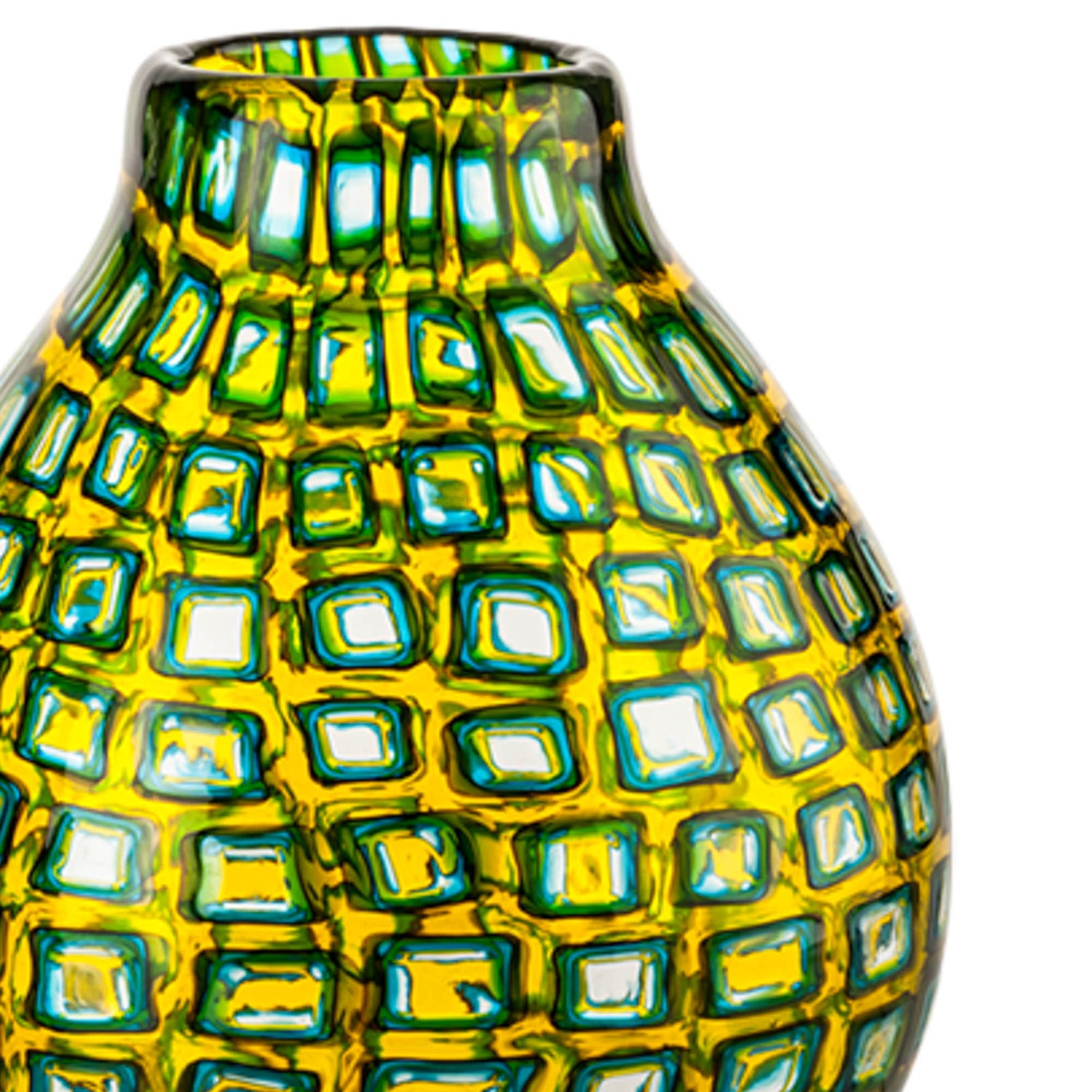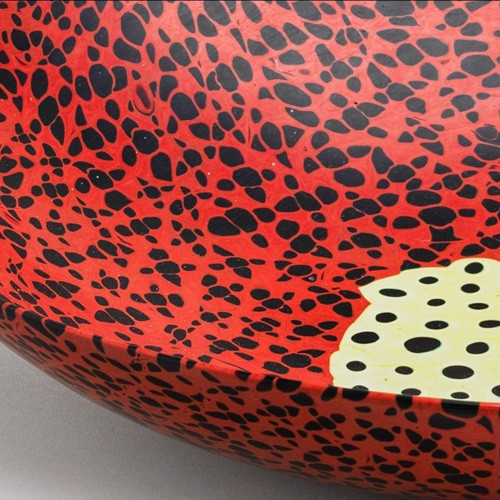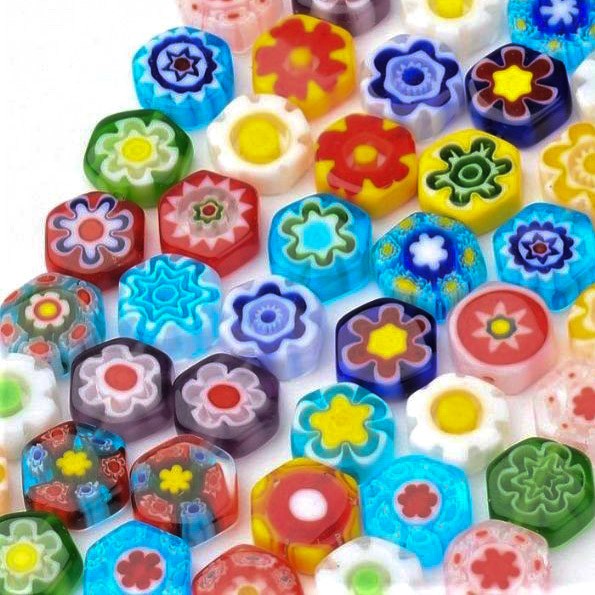The murrine romane (“Roman” murrine) were the result of a collaboration between Carlo Scarpa and Paolo Venini , who decided to create a new series of glass pieces by drawing on ancient murrine from his personal collection.
As appears evident from some of Scarpa’s drawings, he developed Venini’s ideas designing vases and bowls, most of which were produced and exhibited at the 6th Triennale in Milan and at the 20th Venice Biennale in 1936.To create these extraordinary items, a technique used in Murano at the end of the 19th and at the beginning of the 20th century was readopted. Previously-made intersecting glass rods, were cold-joined and placed on a metallic slab covered with clay, which was put into a furnace at 700 degrees Celsius to melt the rods together. The glass piece thereby obtained was then shaped using open moulds or glassmaker’s tools to create a wide range of forms.
The “Roman” murrine featured a peculiarly rough and irregular surface, owing to the varying thickness of the rods, which were mainly in clear glass, with a lively coloured core. This technique was used again in 1940 to produce two rectangular-shaped bowls.




Leave a comment
All comments are moderated before being published.
This site is protected by hCaptcha and the hCaptcha Privacy Policy and Terms of Service apply.